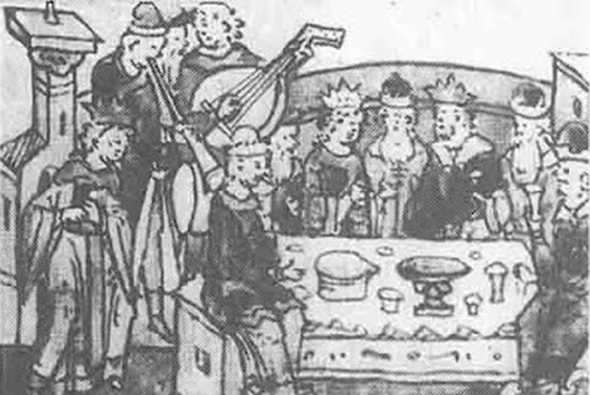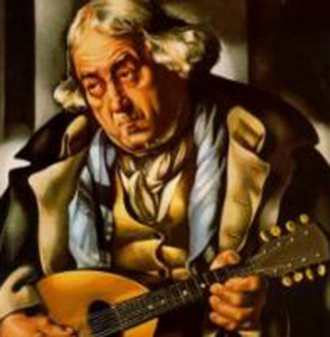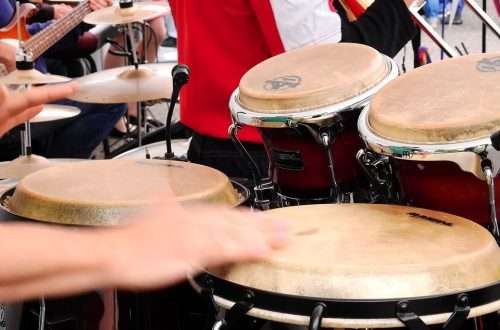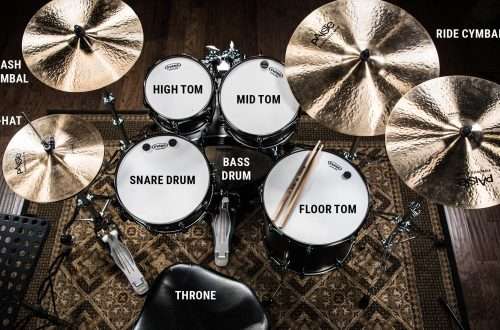
History of domra
Many historians believe that domra – primordially Russian instrument. However, his fate is so unique and amazing that it is not worth rushing with statements of this kind, there are 2 versions of its appearance, each of which can be true.
The first mention of domra that has come down to us dates back to the 16th century, but they talk about domra as an instrument that has already gained wide popularity in Russia. One of the most common theories for the origin of this plucked musical instrument is oriental heritage. Instruments very similar in form and method of extracting sounds were used by the ancient Turks and were called tambours. And the name “domra” clearly does not have a Russian root. This version is also supported by the fact that the eastern tambour had the same flat soundboard and the sounds were extracted with the help of handicraft wood chips. It is believed that it was the tambur that was the forefather of many oriental instruments: Turkish baglamu, Kazakh dombra, Tajik rubab. It is believed that it was from the tambour, in the course of some transformations, that the Russian domra could have arisen. And it was brought to Ancient Russia during the period of close trade relations with the countries of the East, or during the period of the Mongol-Tatar yoke.
One of the most common theories for the origin of this plucked musical instrument is oriental heritage. Instruments very similar in form and method of extracting sounds were used by the ancient Turks and were called tambours. And the name “domra” clearly does not have a Russian root. This version is also supported by the fact that the eastern tambour had the same flat soundboard and the sounds were extracted with the help of handicraft wood chips. It is believed that it was the tambur that was the forefather of many oriental instruments: Turkish baglamu, Kazakh dombra, Tajik rubab. It is believed that it was from the tambour, in the course of some transformations, that the Russian domra could have arisen. And it was brought to Ancient Russia during the period of close trade relations with the countries of the East, or during the period of the Mongol-Tatar yoke.
According to another version, the roots of modern domra should be sought in the European lute.  Although, during the Middle Ages, any musical instrument equipped with a rounded body and strings, from which sounds were extracted using a plucked method, was called a lute. If you delve into history, you can find that it has eastern roots and originated from the Arabic instrument – al-ud, but later the European Slavs influenced the shape and design. This can be confirmed by the Ukrainian-Polish kobza and its more modern version – the bandura. The Middle Ages are famous for close historical and cultural relations, so the domra is rightfully considered a relative of all stringed-plucked musical instruments of those times.
Although, during the Middle Ages, any musical instrument equipped with a rounded body and strings, from which sounds were extracted using a plucked method, was called a lute. If you delve into history, you can find that it has eastern roots and originated from the Arabic instrument – al-ud, but later the European Slavs influenced the shape and design. This can be confirmed by the Ukrainian-Polish kobza and its more modern version – the bandura. The Middle Ages are famous for close historical and cultural relations, so the domra is rightfully considered a relative of all stringed-plucked musical instruments of those times.
In the period from the 16th to the 17th century, it was a significant part of Russian culture. Skomoroshestvo, which was common in Russia, always used domra for their street performances, along with harps and horns. They traveled around the country, gave performances, made fun of the boyar nobility, the church, for which they often provoked anger from the authorities and the church. There was a whole “Amusement Chamber” that entertained the “high society” with the help of this musical instrument. However, starting from 1648, a dramatic time comes for domra. Under the influence of the church, Tsar Alexei Mikhailovich called the theatrical performances of buffoons “demonic games” and issued a decree on the extermination of “instruments of demonic games” – domra, harp, horns, etc. From this period until the 19th century, historical documents do not contain any mention of domra.
The story could have ended so sadly, if in 1896, in the Vyatka region, an outstanding researcher and musician of that time – V.V. Andreev, did not find a strange musical instrument that has a hemispherical shape. Together with master S.I. Nalimov, they developed a project for creating an instrument based on the design of the specimen found. After reconstruction and study of historical documents, it was concluded that this is the old domra.
The “Great Russian Orchestra” – the so-called balalaika orchestra led by Andreev, existed even before the discovery of domra, but the master complained about the lack of a leading melodic group, for the role of which she fit perfectly. Together with the composer and pianist N.P. Fomin, with whose help the members of Andreev’s musical circle learned musical notation and reached a professional level, the domra began to turn into a full-fledged academic instrument.
What does domra look like? There is an opinion that it was originally made of logs. There, wood was hollowed out in the middle, a stick (neck) was completed, stretched tendons of animals served as strings. The game was carried out with a sliver, a feather, or a fish bone. Modern domra has a better body made of maple, birch, neck made of hard wood. To play the domra, a plectrum made from a tortoise shell is used, and to get a muffled sound, a plectrum made of genuine leather is used. The stringed instrument consists of a round body, an average length of the neck, three strings, a quarter scale. In 1908, the first 4-string varieties of domra were designed.  It happened at the insistence of the famous conductor – G. Lyubimov, and the idea was realized by the master of musical instruments – S. Burovy. However, the 4-string was inferior to the traditional 3-string domra in terms of timbre. Every year, interest in only intensified, and in 1945 the first concert took place, where domra became a solo instrument. It was written by N. Budashkin and was a resounding success in subsequent years. The consequence of this was the opening of the first department of folk instruments in Russia at the Institute. Gnesins, which had a department of domra. Yu. Shishakov became the first teacher.
It happened at the insistence of the famous conductor – G. Lyubimov, and the idea was realized by the master of musical instruments – S. Burovy. However, the 4-string was inferior to the traditional 3-string domra in terms of timbre. Every year, interest in only intensified, and in 1945 the first concert took place, where domra became a solo instrument. It was written by N. Budashkin and was a resounding success in subsequent years. The consequence of this was the opening of the first department of folk instruments in Russia at the Institute. Gnesins, which had a department of domra. Yu. Shishakov became the first teacher.
prevalence in Europe. In the Bible translated by Semyon Budnov, the name of the instrument was mentioned in order to focus on how much the Israelites praised God in the psalms written by King David “Praise the Lord on domra”. In the Principality of Lithuania, this musical instrument was considered a folk entertainment for ordinary people, but during the reign of the Grand Dukes of the Radziwills, it was played in the yard to please the ear.
To date, concert, chamber musical compositions are performed on domra in Russia, Ukraine, Belarus, as well as in other post-Soviet countries. Many composers have devoted their time to creating musical works for this instrument. Such a short path that the domra has passed, from a folk to an academic instrument, no other musical instrument of a modern symphony orchestra has managed to go through.





